DRA Afghan Air Force and Air Defense in the first half of the eighties
Many of the more competent Air Force personnel were purged in the wake of the Communist takeover in 1978 and Soviet invasion in 1979. Therefore the Afghan Air Force nearly collapsed after the Soviet invasion of Afghanistan. Moscow tried to get rid first of all of the politically unreliable pilots. Afghan Air Force and Air Defense strength plummeted from about 15,000 before the Soviet invasion to about 5,000 in 1980. Moscow so distrusted the competence and political reliability of Afghan pilots that it halted combat missions temporarily that year.
The Soviets launched an ambitious five-year modernization program shortly after their invasion that called for expansion of the Air Force. In the first half the eighties the Soviets major efforts to upgrade its personnel and technical inventory again.
-
Afghan students were enrolled in Soviet schools and Afghan pilot training was reformed at Mazar-i-Sharif airport. The air force was increased to about 10,000 personnel by the mid-1980s again.
-
Moscow has increased the Air Force inventory from about 260 to 325 fixed- and rotary-wing aircraft since 1979 and replaced obsolete fixed-wing aircraft with more advanced types In 1979 obsolescent MiG-17s, IL-28 bombers, and IL-14 transports constituted two-thirds of the Air Force's fixed-wing aircraft. By the beginning of 1986, more modern MiG-21, Su-7BMK, Su-22M bombers, L-39C trainers, and AN-26 transports constituted 73 percent of the Air Force's fixed-wing aircraft.
-
The number of helicopters, which have generally proved to be more effective against small insurgent bands than fixed-wing aircraft, has increased from about 25 to 100.
Between 1979 and 1984, the Soviet Union delivered to Afghanistan nearly fifty MiG-21bis/UM and Su-22M/UM high-speed fighter/fighter-bomber aircraft and about forty An-26 twin-engined turboprop military transport aircraft.
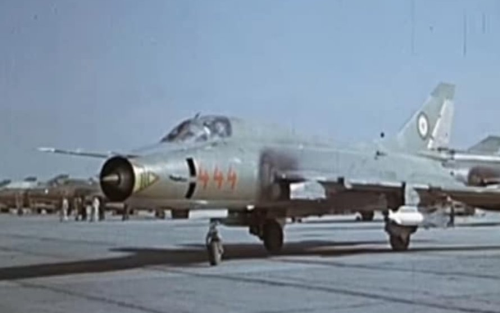
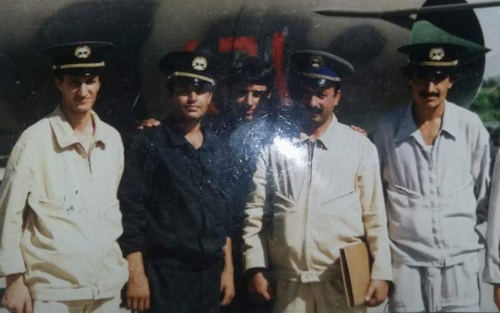
In the early 1980s, two squadrons of variable-wing Su-22Ms ‘Fitter-J’ arrived in Bagram. This Afghan Su-22M bomber here taxiing onto the runway with two missile.
The Bagrami Regiment handed over its old Su-7BMK ‘Fitter-A’ bombers to the 335th Mixed Air Regiment at Shindan airport

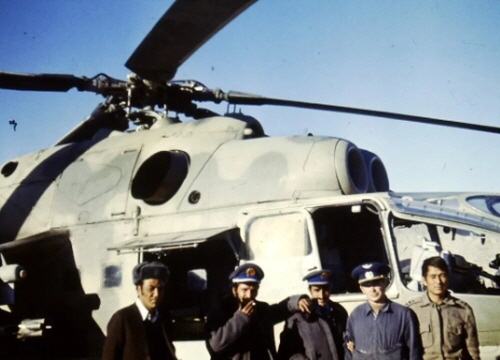
The veteran Afghan MiG-17 ‘Fresco’ was largely withdrawn by the mid-1980s, with the crews being retrained on more modern types.
The first squadron of the 377th Helicopter Regiment used the Mi-24A/D Hind-A/D attack helicopters.
Since the helicopters generally proved to be more effective against smaller rebel groups than fixed-wing aircraft. Therefore, Moscow delivered nearly a hundred pieces Mi-8T ‘Hip-C’ and Mi-24D/A ‘Hind-D/A’ helicopters to Afghanistan in the first half of the 1980s.
The new helicopters were given to newly created Afghan air units. The 377th Helicopter Regiment was formed at Kabul airport with Mi-24 combat and Mi-8T descent helicopters, but several smaller local Mi-8 transport helicopter squadrons were also formed across Afghanistan in the early eighties.
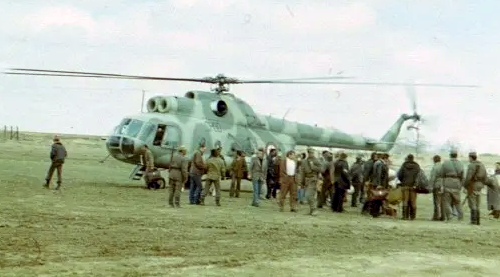
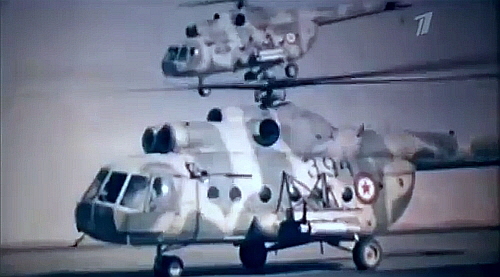
Afghan Mi-8T ‘Hip-C’ transport helicopter from the Dehdadi airport in the early eighties, 380th Helicopter Squadron
The Afghan 377th Hellicopter Regiment Mi-8T ‘Hip-C’ assault helicopters were equipped with external armour and chaff-flare dispensers in the first half of the eighties
DRA Afghan Air Force and Air Defense’s
order of battle in 1983

* Clarification is needed.
** Under downsizing.


Afghan 373rd Transport Air Regiment’s An-26 ‘Curl’ medium cargo aircraft at Mazar-i-Sharif airport in 1981. Between 1977 and 1984, the Soviet Union delivered nearly fifty An-26 aircraft to Afghanistan.
Between 1979 and 1980, the Soviet Union delivered about one squadron of MiG-21bis ‘Fishbed-N’ tactical fighters and a few MiG-21UM ‘Mongol-B’ two-seater fighters to Afghanistan. The new type was assigned to the first squadron of the 322nd Fighter Aviation Regiment. While the previously MiG-21PFM/FL ‘Fishbed-F/D’ types were merged into the regiment's second squadron at the Bagram airport. After an industrial overhaul, the old afghan MiG-21PFM/FL interceptors were given a similar sand-green camouflage as the new factory fresh MiG-21bis types.
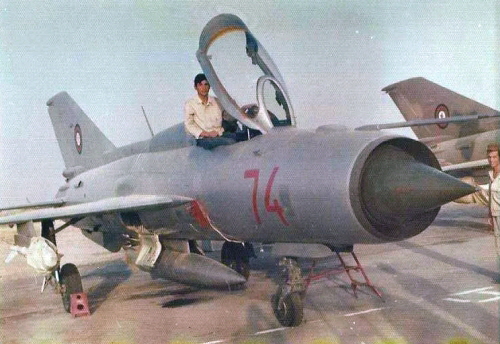
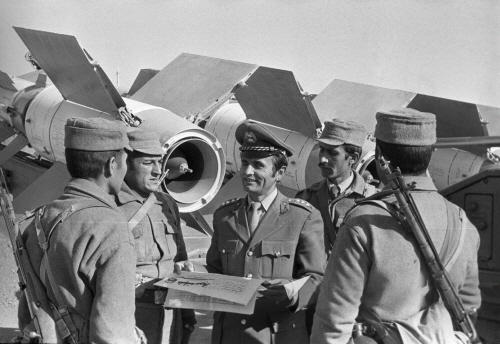
Afghan 322nd regiment’s MiG-21FL ‘Fishbed-D’ fighter aircraft with R-3S air to air missile
Afghan Air Defence’s S-125M Neva surface-to-air missile system in 1985
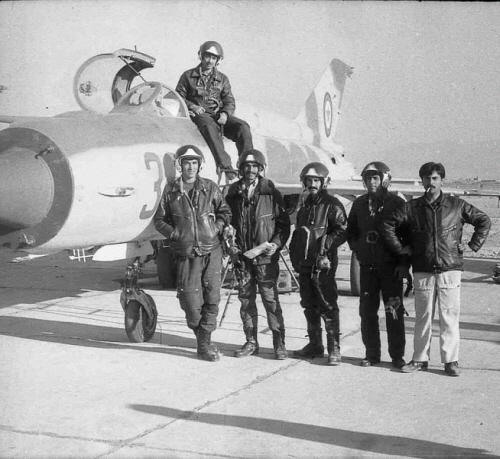
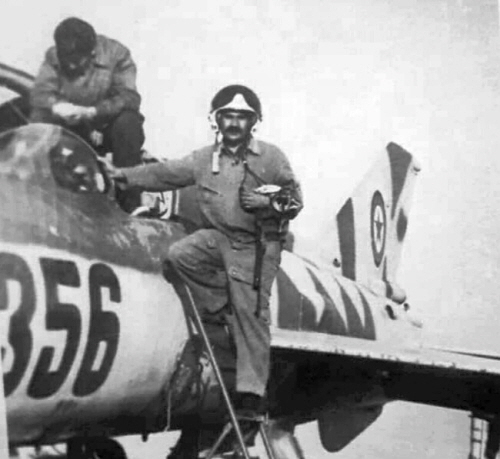
Afghan pilots of the 322nd Fighter Aviation Regiment in front of their new MiG-21bis ‘Fishbed-N’ tactical fightr aircraft.
The older MiG-21PFM ‘Fishbed-F’ fighter from the 322nd regiment.
The lack of trained and motivated Afghan staff has caused many problems. The Afghan aircraft were periodically grounded or flown by Soviet pilots because the Air Force did not always have a pilot for every aircraft.
There was also a lack of routine maintenance technicians. The poor maintenance leads to accidents because pilots are forced to fly with badly maintained aircraft. The Afghan mechanics were not allowed to make even minor repairs without Soviet supervision because the Soviets do not trust their competence.
The Afghan personnel resented both the disparaging remarks that the Soviets often make about their capabilities and the presence of Soviet advisers. Thes and the sympathy for the insurgents also contributes to the Air Force's political unreliability.
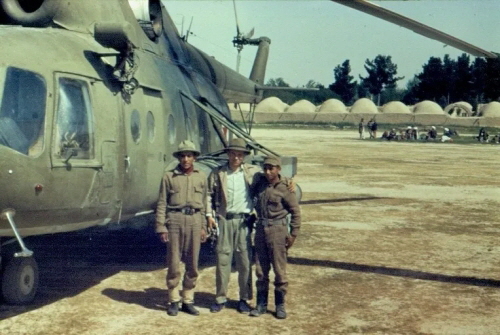
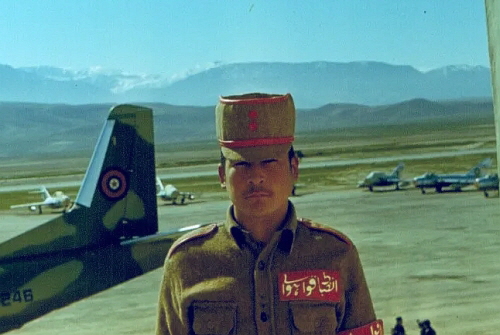
A very early Afghan Mi-8T ‘Hip-C’ helicopterat Dehdadi airfield in the early eighties. This helicopter first arrived at Bagram airport in the early 1970s. Ten years later it was transferred to the 393rd regiment at Dehdadi airfiled.
Afghan An-26 ‘Curl’ cargo aircraft from the 373rd Transport Air Regiment in front of the 393rd Training Air Regiment’s MiG-17 ‘Fresco-A’ and MiG-15UTI ‘Midget’ advanced trainer aircraft in 1981 at the Mazar-i-Sharif airport.
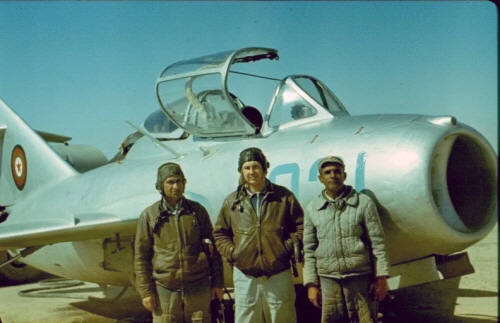
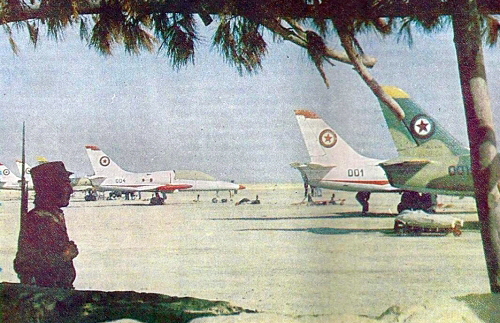
Soviet advisor and two Afghan soldier in front of a 393rd Training Air Regiment’s MiG-15UTI ‘Midget’ in 1981.
Czechoslovakian made Afgan L-39C Albatros trainer aircrafts of the 393rd Training Air Regiment at the dusty Dehdadi airfiled in the midle of eighties.
The Soviets have failed to make the Afghan Air Force into an effective military force despite major efforts to upgrade its personnel and technical inventory.
The Soviets have prevented the Afghan Air Force from playing a wider role in the war because of its poor performance. The Afghan Air Force missions have been largely limited to supporting the Afghan army.
Text source: The Afghan Air Force: New Planes, Old Problems,Little Impact - CIA document